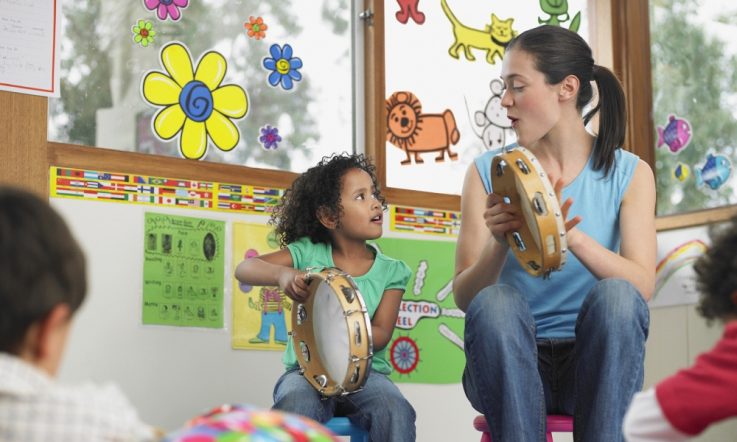Discussions and debate around the education of refugee students can often focus on the challenges and difficulties. Finnish researcher Mervi Kaukko has come to Australia to explore the other side of the story – how are teachers helping students to be successful at school?
Kaukko is a lecturer in the Faculty of Education at Monash University who has been speaking to refugee students in Melbourne about their positive experiences at school. The Finnish-Australian research project (Educational Success through the Eyes of a Refugee Child) is in collaboration with Monash Associate Professor in Education, Jane Wilkinson.
‘We started planning this as a parallel study as I knew that Australia has a much longer history in educating diverse groups of kids; you have so many children from migrant and refugee backgrounds here. I also knew this kind of research already existed here [through Jane's work in rural New South Wales]. Before I came to Australia I collected a similar set of data in Finland, interviewing primary-aged children whose teachers had identified them as doing well in school.'
Kaukko, who was a primary teacher in Finland before moving into academia, says she wanted to focus on the things that were going well because a lot of research focuses on negatives. ‘I thought that this discourse about the trouble and trauma and deficit painted a picture of teachers struggling at schools, working hard to fill to gaps in students' learning. This research is very important, but it's not the whole picture. I felt like the other side of the story should be heard as well.
‘Partly due to my PhD thesis work with unaccompanied asylum seeking girls and also my teaching experience, I knew that many children in schools who have come from a refugee background who often have big gaps in their education are very happy in school – they start to do well and flourish quickly. There are schools everywhere that are full of excellent teachers who have found ways to work with refugee students.'
The researchers asked teachers to nominate students who were ‘doing well' at school, and to think about their success in a broad way – not just academically, but socially. ‘We wanted them to think about the whole child. Also, we know that to be able to learn there are some basic elements in wellbeing that need to be in place first, for example children need to feel safe and they need to feel like they belong in their group, and that they are accepted and supported,' Kaukko says, adding this is common sense for teachers working with all children, but particularly newly-arrived students.
What's working well in Finland
Reflecting on examples from the study so far, Kaukko says schools are very different in Finland and a lot of those differences make a lot of sense, particularly for refugee students – the school days are shorter, there is less pressure on academic achievement and teachers have more freedom.
‘Particularly in primary schools, there's more focus on play, more focus on making friends, and more time to do other things within the school day. In many schools, every hour has a 15 minute recess when the kids go out and play (and they go out in all weathers – rain, snow and temperatures below zero), but there's also this social time in lessons with learning activities that are not so teacher-led.'
Kaukko says teachers have more autonomy to plan their school days according to what they think works best for their group of students and their needs. ‘In Finland there's an expectation that they know their students very well and that they differentiate in classrooms, so that everybody learns at their own level. For kids that have recently come to the country it makes a lot of sense to give them a lot of time to just explore and to build relationships and learn by playing and by talking.'
She says another example is the Finnish school system places a big emphasis on supporting students' first language. ‘Whenever possible the school tries to organise native language lessons as well as Finnish language. The support of Finnish language learning is also needs based. It's not a fixed six or 12 months, for example, but as long as the student needs to be able to do everything in a mainstream classroom. Also, after the student is moved to a mainstream classroom they get support for a long time for Finnish as an additional language. So it's not that when a child looks like he or she can cope with everyday language that the support is over – in Finland it is considered important that the support continues as long as needed.' She adds children are also pushed to the next level in their academic Finnish.
Examples of good practice in Australia
Kaukko has worked with a handful of schools in Melbourne and see some similarities with the Finnish system's focus on play. ‘I've seen in Australia where they have investigations or inquiry-based learning, and that can be play-based. And I understand that Australian schools are much more tied to their curriculum and what they need to fit into the days, but I've seen schools – for example Noble Park Primary School – where the teachers and leadership have made a decision to find time for play and child-led activities throughout the day and at every year level.
‘I know a lot of schools here in Australia do that, and that's something I like. I like how they use the outdoor learning spaces as well as the indoor learning spaces – I know some of that is related to the climate, but lessons in Finnish schools do not take place outdoors.
‘I've seen excellent teachers in both countries. I've seen a lot of excellent teachers in Australia who work really hard to learn where their students come from … who want to learn from the child's families, and that is their way of figuring out what the kids already bring with them to their learning and what they already know so that their learning can be built on the prior knowledge.'
Sharing refugee student stories with a wider audience
It was the researcher's interviews with refugee students at Noble Park Primary School that prompted a student-led book and claymation film project. One of the girls asked where their stories would be shared and when Kaukko explained the research would be published primarily in academic journals, the girl said it would be great if a wider audience could be reached, including children. So, the 13 students from seven different countries decided to write their own book. Ali and the Long Journey to Australia is based on their own experiences. The book then led to an animated film.
It's hoped to make the book and the animation into a teaching resource, as both a stimulus for literacy work and to open a dialogue about refugee students. ‘There are a lot of kids in Australia and elsewhere who've never met a child from a refugee background. So part of the teaching resource – if we get funding and manage to do it – is how to use the video and book in teaching, but also claymations, and the method of storycrafting (which I used for the book). Storycrafting helps students share their stories, especially those who don't speak English as their first language.'
Kaukko adds the next steps research-wise will be to delve deeper into some of the early findings on the importance of play, not only as a fun part of a school day for students but play as a pedagogical practice to help refugee students learn. They also want to explore the use of indoor and outdoor learning spaces in relation to this group of students. ‘And we'd like to talk to more schools in Australia. This research is very small; we've only been to a few schools in the Melbourne area, so I'd like to see how schools are doing in other parts of Australia.'
The researchers in this study say they’ve seen excellent examples of Australian teachers who really work to understand where their refugee students come from. Think about your own classroom: in what ways do you go about understanding more about your students’ cultural backgrounds? What about their prior learning experiences and knowledge?
The researchers also found examples of Australian primary schools that have made a conscious decision to find time for play and child-led activities throughout the day and at every year level. Is this something you do in your school setting? How does this impact on student engagement?



